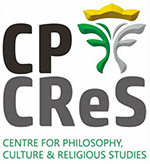Making Sensation: Sculpturing Bamboo by Joko Avianto
DOI:
https://doi.org/10.26593/mel.v38i1.7098Keywords:
affect and percept, art practice, bamboo medium, ethico-aesthetics, monuments of sensationAbstract
The creation of visual art has often been considered to be the privilege of the artist, where art is confined to the purpose and intention of its creation, and the assessment of art becomes a series of explanations that restrain the meaning of an artistic expression. From the perspective of Deleuze-Guattari, art is a monument of sensation that transcends the boundaries of subject and object, and it stands as a statement about itself. The relationship between the artist-subject and material-object used in the process of creating visual art is therefore in the domain of visual practice as a kind of thinking and acting strategy. Joko Avianto’s three-dimensional works exhibited in Frankfurt, Germany, and Yokohama, Japan, are examples of Deleuze-Guattari’s explanation of monuments of sensations in their embodiment. Joko Avianto creates a distinctive and subjective method of artistic action in his creative process, transforming perception into percept and affection into affect, and affirming the state of becoming. Art, visual art, and art practice are mechanisms that allow them to express an ethico-aesthetic paradigm. This paradigm reconnects each existence and becoming of the subject, through aesthetic experience, to the re-emerging new world. Thus, what makes art special is its capability to both transcend and surpass the limits to rediscover or restore the boundless.
Downloads
Published
Issue
Section
License
Copyright (c) 2023 Rizki A. Zaelani

This work is licensed under a Creative Commons Attribution-NonCommercial 4.0 International License.
MELINTAS applies the Creative Commons Attribution (CC BY NC) license to articles and other works we publish. If you submit your paper for publication by MELINTAS, you agree to have the CC BY NC license applied to your work.


